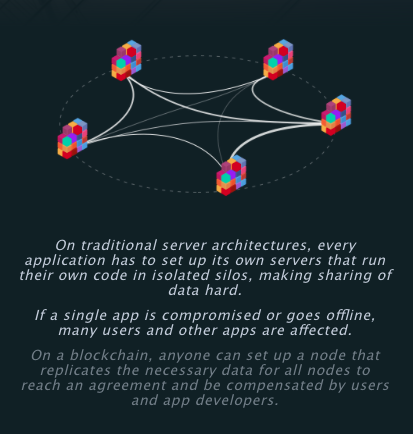The Carpathian Sphinx also referred to as the Romanian Great Sphinx, is considered by conventional science as a natural rock formation found in Bucegi Natural Park in the Bucegi Mountains of Romania, which is also part of the much-larger Carpathian Mountain Range located across six countries in Europe. If you dare to measure it, you’ll find that the sphinx sits on a very high plateau, at an altitude of 7,270 feet or 2,216 meters.
The Carpathian Sphinx has a height of 8 meters and width of 12 meters. As for its appearance, photographs have shown that from a certain angle, the stone formation looks like an otherworldly being which has a human head with discernible lips and even a chin. The figure also looks like it is wearing a cap and as if its gaze is focused at the sky above. It has also been said that the figure of the sphinx is seen best every 21st of November, around sunset.
Aside from the Carpathian Sphinx, there are also other fascinating and equally intriguing rock formations and natural caves found in the Bucegi Mountains, which is probably why these mountains have been under the protection of Romanian authorities and are recognized as one of the country’s national parks. Given the various sights to see in this area, it is not at all surprising that the Bucegi Mountains, including the Carpathian Sphinx, are very popular natural tourist attractions in Romania.
The Mysterious Claims About the Carpathian Sphinx & The Bucegi Mountains
In recent years, however, the public’s interest in the Carpathian Sphinx and the Bucegi Mountains is not just limited to their scenic views, but also for various claims that go against our current established conventions and knowledge about our origins and our history.
One of the most widely-suggested alternative theories is that the Carpathian Sphinx, along with the other rock formations found in these mountains, is actually evidence of extraterrestrial presence, if not an advance ancient civilization, on Earth. And to prevent the public from figuring out the truth that our planet was once home to an advanced and possibly alien civilization in our distant past, there is allegedly a grand scheme or conspiracy to safeguard this close-guarded secret from ever coming out.
So… what is this big secret that various governments have agreed not to make public knowledge just yet? Well, there’s a theory that within the mountain that the Carpathian Sphinx stands on is a complex network of tunnels believed to be of ancient and even of extraterrestrial origin. This elaborate underground labyrinth purportedly leads to a variety of large rooms containing large tables and chairs as if they were made for people larger than modern-day humans.
Even more peculiar are the allegations that these rooms contained advanced technology beyond what we are currently capable of, and that this mysterious underground facility was built around 50,000 years ago.
2009 Book "Transylvania Sunrise" by Radu Cinamar & Peter Moon
From whom did these fascinating claims originate, and why did they start to gain ground in recent years?
Well, talk of an alien civilization having once lived within the Bucegi Mountains sparked with the publication of the book “Transylvanian Sunrise,” which was written by someone named Radu Cinamar and Peter Moon, and was published back in 2009. At the time of its release, this book pretty much “rocked the boat” of the paranormal research community with its declaration that a stunning discovery was supposedly made beneath the Carpathian Sphinx which could significantly alter our current knowledge about mankind’s history and our ancient ancestors.
The book posits that in the early 2000s, the Pentagon found an “anomaly” hidden under the Carpathian Sphinx and within the Bucegi Mountains using satellite technology. What they uncovered was apparently so vital that the Pentagon had to go through the top levels of Freemasonry to ally with “Department Zero” – a classified department of the Romanian Intelligence Service – to make sure that the truth never gets out.
The story goes back in 2002 when the Pentagon was supposedly using its satellite for military surveillance and geodetic espionage, through which they found a structure inside the tall mountain where the Carpathian Sphinx was located. This hidden facility they detected was no ordinary cave or labyrinth, as the satellite scan showed that the mountain emitted two powerful energy blocks: one was connected to a wall which obstructs access to the tunnel, while another was located at the mountain’s center. The latter’s energy field was also much larger and was shaped like a hemisphere or a dome.
The stream of energy emanating from these two locations inside the mountain made it seem like something extraordinarily valuable is being guarded in this discovered structure. And so, naturally, they decided to investigate further and attempted to reach the tunnel inside the mountain, with the United States military supposedly providing the high-tech machine that would drill through the rocky surface. When they managed to reach the mysterious tunnel found by the Pentagon, they saw a huge stone gate at the end of it. However, before they could get to this gate, their access was impeded by an invisible energy field, which ended up automatically killing those who dared to touch it.
During this thorough investigation of the area, some of what they found inside include large stone tables that project holographic images; advanced technology that can analyze DNA compatibility of different beings; a library that contains information on a collection of topics, including other intelligent races; and an oversized projection room that could show actual images of various events in mankind’s history.
The Site of the Carpathian Sphinx as Evidence of an Advanced Ancient Alien Civilization
Compelling details like these make sci-fi thriller novels an interesting read and difficult to put down, which could be one of the reasons why many people dismiss Cinamar and Moon’s book as nothing more than a work of fiction. But for those who are willing to reserve passing judgment so quickly, is it possible that these shocking claims about the Carpathian Sphinx and the Bucegi Mountains could be more than just an elaborate and well-thought-out hoax?
The idea that there was this one-big global conspiracy to prevent disclosing new archaeological finds that could cast doubt on the majority of the things we have been told to hold true does seem to be a bit of an overreach, but it is not the only one to suggest that there is something special about the Bucegi Mountains.
For example, several centuries ago, Herodotus wrote in the fourth volume of his Histories about the Dacians who once inhabited Romania approximately between 82 BC and 106 AD. These Dacians were worshippers of a god named Zalmoxis, who they believed built his place of residence underground and was living in the cave of a holy mountain located in today’s Bucegi Mountains. This account from Herodotus is further supported by an old legend in Romania about its local deity named Zamolxis who resided inside mountains and would disappear into a secret cave whenever he needed to confer with his seers.
Of course, just because we brought up Herodotus and local legends does not automatically validate claims that we are being denied the truth that ancient civilizations far advanced than our own existed tens of thousands of years ago and that they could have extraterrestrial origins. But you know what? For me, all this talk about a massive conspiracy theory that supposedly hides the existence of extraterrestrial life and technologically-superior ancient civilizations does not seem all that crazy to me. And while science and logic require more than just a published book as evidence of such claims, there are among us who are already quite convinced that there is definitely something more than meets the eye when it comes to fascinating sites like the Carpathian Sphinx and the Bucegi Mountains.





























